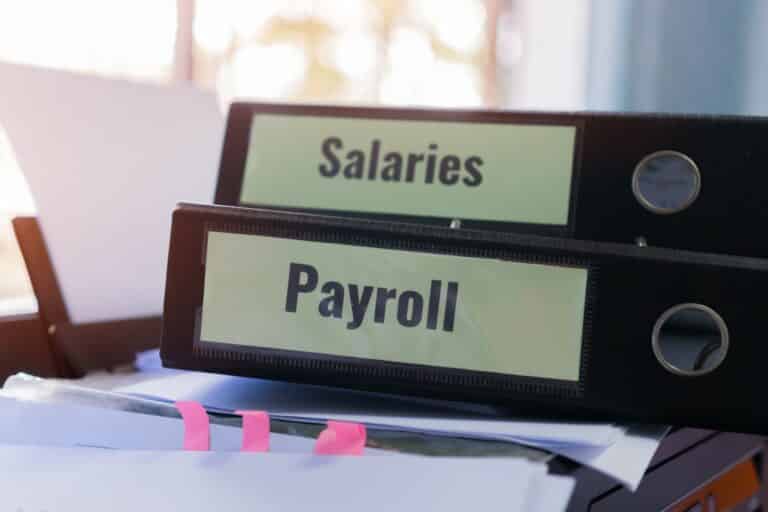What does the Return-to-Work fund (Werkhervattingskas or Whk) entail?

- Werkhervattingskas (Whk) = Return-to-Work fund -> a fund from which sickness and disability benefits are paid. Premiums are paid by employer and is a financial incentive for employers to try to prevent that employees become sick or disabled.
- Wet Poortwachter = Gatekeeper Improvement Act -> legal basis for the actions that an employer must perform if an employee becomes sick or unfit for work.
- UWV = Employee Insurance Agency -> an autonomous administrative authority (ZBO) and is commissioned by the Ministry of Social Affairs and Employment (SZW) to implement employee insurances and provide labour market and data services.
- ZW = Sickness benefit -> if an employee becomes sick and the salary is not continued to be paid by the employer (only applicable in certain situations.
- WIA = Work and Income Act -> if an employee has been sick for nearly 2 years and wishes to apply for an invalidity benefit, also known as a WIA benefit.
- WGA = Return to Work (Partially Disabled) Regulations -> if an employee is partially disabled to work and receives a benefit.
The Return-to-Work fund
The Return-to-Work fund (“Werkhervattingskas or Whk”) is part of the employee insurance schemes. Employers pay a premium for the Return-to-Work fund. From these contributions the wage costs of employees who are sick or disabled are financed. The premium you pay depends on the size of your organization and the degree of disability. Before the end of the year, the tax authorities send you the decision on the differentiated contribution.
Many employers are faced at some point with employee absence due to sickness. This may be short or long-term sick leave. Employers have a number of obligations that must be met in relation to the reintegration of employees. These include the duration of the absence and the type of contract that the employee has. By complying with these obligations, employers can avoid the risk of a possible increased Whk premium.
The legislator’s reasoning for taxing absenteeism through the Whk contribution is not entirely illogical. During the introduction of our social security system, sick leave has been a recurring topic. On the one hand, we all want to be assured of an income. Even if we become ill. On the other hand, all those benefits must also be paid. Over the years it has emerged that, despite various incentives and tightened regulations to qualify for disability benefits in the first place, the number of benefits has continued to rise.
However, the mere fact that someone can no longer perform certain work for an employer does not mean that he or she is unable to do anything at all. By introducing this financial incentive for employers, the legislator tries to stimulate that the maximum is achieved from the reintegration possibilities of a sick employee, or even better: that absenteeism is prevented.
Self-insurer or not?
As an employer, you are financially responsible for the WGA and Sickness Benefits Act inflow that occurs during the period an employee is employed by you. Ex-employees who leave your company sick or become sick within four weeks after the end of their employment will also be liable. Twice a year the employer can choose to become self-insurer for the ZW and/or WGA. In both cases, the employer has the option to insure himself:
- Private: In this situation, as an employer, you are self-insurer. The UWV sends a monthly specification, after which the allocated costs are paid. The employer can insure himself for this. If the costs increase, this often leads to a higher insurance premium.
- Public: In this situation, the employer is not a self-insurer. The imputed ZW and/or WGA costs contribute to the annual Whk premium.
Risk of sick leave 2 years
The risk for the employer with respect to absenteeism starts with the obligation to continue to pay wages during the first two years of illness. If your employee is ill, you must pay at least 70% of the salary per year. That means 140% in two years. However, most collective agreements state that a sick employee is paid 170% of the salary over 2 years. Often this is 100% in the first year and 70% in the second year. In addition, the employer is responsible for the absenteeism and reintegration of the sick employee.
Possible wage penalty after 2 years of absence
After 2 years of illness, the employee may apply to the UWV for WIA benefits. If the UWV is of the opinion that you, as an employer, have failed to comply with the reintegration obligations, the UWV will oblige you to continue paying your employee’s wage for a maximum of one year longer. This so-called wage penalty is certainly no exception. This is another reason why it is essential that you comply with the requirements of the Gatekeeper Improvement Act (“Wet verbetering poortwachter”) during the two years of illness.
Risk of disability 10 years
If, after two years of absence due to illness, your employee is partially (35%-80%) incapacitated for work or completely but not permanently (80%-100%) incapacitated for work, then, if you are insured with the UWV, the benefit costs will be passed on to the employer for a further 10 years. This on-charge takes place via the Return-to-Work Fund (Whk) decision. The tax authorities calculate your premium on the basis of the WGA (Resumption of Work partially Disabled Persons) information they receive from the UWV about your organization.
Whk premium
Letters with premium percentage Return-to-Work fund
In the last quarter of the year, the tax authorities send the letters containing the differentiated contribution rate for the Return-to-Work fund to the address of the employer, not to the address of the intermediary, if any. Has the employer not received the letter by December 15? If so, request a duplicate.
Requesting a duplicate
If you have not received a Whk decision (from previous years) or you cannot find it, please contact the tax authorities. You can do so by calling: 0800 – 0543 (free of charge). Only the tax authorities can provide you with a copy.
You can also request a duplicate by sending a letter to:
Belastingdienst
P.O. Box 8738
4820 BA BREDA
Mention at least the wage tax number and the address of the company in the letter. You will then receive the duplicate as soon as possible. You can also indicate that you want to receive the duplicate by email. In that case, not only mention the postal address but also the email address in the letter.
Small employers cannot receive a duplicate. The sectorally determined contribution rates for small employers can be downloaded from the website of the tax authorities.
How is the Whk premium determined?
The Whk premium is determined separately for each employer. The premium consists of two components: the differentiated premium WGA and the differentiated premium ZW. Different parameters are used to calculate the premium. These parameters are published annually by the tax authorities and are as follows:
- The total wage bill of an organization: this parameter determines whether an organization is classified as a small, medium or large employer.
- Paid WGA and Sickness Benefits Act (ZW) benefits: this parameter forms the basis for the two components of the Whk premium and is part of the individual employer’s premium.
- The sector premium: if you are a small or medium-sized employer, the premium is (partly) determined by the level of the sector premium.
- It is advisable to check this premium carefully. Costs are regularly wrongly attributed to employers. These unjustified costs can, if detected in time, be reclaimed from the tax authorities.
The premium percentages used by the tax authorities are determined on the basis of the wage bill liable for premiums for the previous two years. So the percentages for the year 2022 are calculated with the information from the year 2020.
Employer categories
The average contributory wage in 2022 is set at €35,300.
- Small employers have a contributory wage bill ≤25 times the average contributory wage (≤€882,500).
- Medium-sized employers have a contributory wage bill >25 and ≤100 times the average contributory wage (>€882,500 and ≤€3,530,000).
- Large employers have a contributory wage bill ≤100 times the average contributory wage which is >€3,530,000.
Amounts for 2023
The average contributory wage in 2023 is set at €36,200.
- Small employers have a contributory wage bill ≤25 times the average contributory wage (≤€905,000).
- Medium-sized employers have a contributory wage bill >25 and ≤100 times the average contributory wage (>€905,000 and ≤€3,620,000).
- Large employers have a contributory wage bill ≤100 times the average contributory wage which is >€3,620,000.
Classification into an employers’ category determines the level of the Whk contribution.
- Small employers: pay a predetermined sectoral contribution as part of the Whk, this is fixed per sector.
- Medium-sized employers: pay a contribution that is partly dependent on the sector classification and partly on the level of the incapacity burden.
- Large employers: pay a premium that is fully dependent on the disability burden. It is especially important for medium-sized and large employers to keep the disability burden as low as possible. The reintegration of sick or disabled employees is decisive for this. Faster reintegration reduces the burden of disability.
Changes to Whk premium
As indicated above, employees who leave employment sick or disabled may affect the premium percentage you pay as an employer. After two years of illness or incapacity for work, these employees end up on the employer’s inflow list. This list is drawn up by the tax authorities. Based on this list it is determined whether you as an employer have to pay more premium. It is important to check this list carefully.
Increase of differentiated contribution Whk
If an employer has or has had sick or disabled employees, the premium will increase. It is important that the differentiated contribution relates to all the employees you employ or have employed. Employers pay the Whk premium over the wage bill of the current workforce, but the level of the percentages is influenced by employee(s) who have left sick or disabled employment in the past.
How do you prevent an increased Whk premium?
When an employee is ill, you have to meet a number of obligations regarding the reintegration of employees. By following the step-by-step plan of the Gatekeeper Act, you can avoid wage sanctions and an increased Whk premium.
Rerturn-to-Work fund 2022 and the Gatekeeper Improvement Act
The Gatekeeper Improvement Act (Wvp) is the legal basis for the actions that an employer must perform if an employee becomes ill or unfit for work. In recent years, an imbalance has arisen in this respect, with small employers having to meet the same requirements as large employers. However, large employers often have more financial resources and internal capacity to meet the conditions of the Gatekeeper Improvement Act than small employers. The amendment to the Return-to-Work fund will provide financial relief to small employers. Large employers, on the other hand, will have to pay a higher contribution in 2022.
Sector classification in 2022
The sector classification for the year 2022 is shown on the 2022 Whk decree. The tax authorities determine the sector classification based on the data registered in the Chamber of Commerce. The SBI code of the main business activity is used as a guide. Do you want to know with which SBI code(s) your company is registered in the Trade Register of the Chamber of Commerce? The SBI codes can be found on the extract of your registration.
Small employers only have to pay a fixed sectoral premium percentage for the WGA and ZW premium in 2022.
Self-insurer
If you bear the risk for the WGA and/or the ZW yourself, you will receive a letter with a premium rate of 0%. You are then responsible for the benefits and reintegration in case of long-term illness of an employee. That risk can be insured with an insurer.






